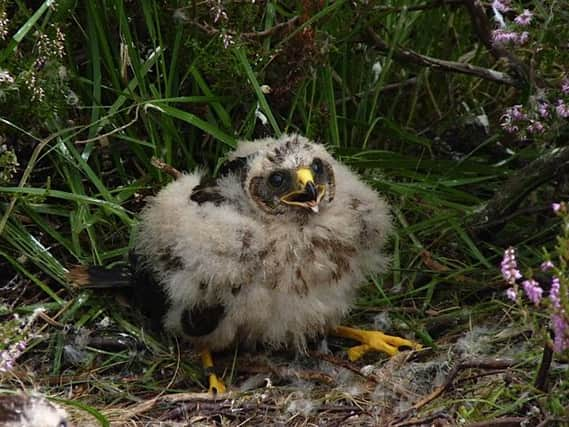Hen harrier recovery plan welcomed


As a bird of prey, hen harriers make an important contribution to our intricate ecosystem – and are a well-loved feature of our skyline, but in recent years their numbers have dropped.
The Hen Harrier Action Plan will for the first time co-ordinate action already taken by conservation groups, landowners and wildlife crime officers across the country to ensure a consistent and strategic approach. The plan will also encourage groups to share best practice to help reverse the decline of these precious birds.
Advertisement
Hide AdAdvertisement
Hide AdEnvironment Minister Rory Stewart said: “This new plan will transform the fate of one of our most magnificent birds.
“We are working closely with conservation organisations and landowners and with their help, this plan will help hen harriers flourish once more while coexisting with a thriving rural economy.
“Our wildlife is a crucial part of our national identity. That’s why we care deeply about protecting this vital species for future generations to come.”
The plan was developed by Defra in conjunction with the RSPB, Game and Wildlife Conservation Trust, Moorland Association, National Gamekeepers Organisation and National Parks UK.
Advertisement
Hide AdAdvertisement
Hide AdNatural England will lead on the six-point plan, working with organisations to:
Monitor hen harrier numbers in England and the UK via satellite tagging and tracking;
Share best practice with land managers and gamekeepers, encouraging the provision of food for birds of prey;
Work closely with the Raptor Persecution Priority Delivery Group (RPPDG) to analyse intelligence on persecution and deliver more effective enforcement and deterrence measures;
Advertisement
Hide AdAdvertisement
Hide AdMonitor and protect nests and winter roosts from disturbance and destruction;
Work with landowners to reintroduce hen harriers to suitable areas in the south of England;
Scope out feasibility for trialling brood management.
According to the Countryside Alliance, the Hen Harrier Action Plan goes ‘a long way to resolving one of the most divisive issues in upland conservation’.
Chief executive Tim Bonner said: “We believe the plan will go a long way to resolving one of the most divisive issues in upland conservation and help bring together all those who care deeply about the future of the uplands.
Advertisement
Hide AdAdvertisement
Hide Ad“We have always been clear that for any plan to be successful it must address the causes of illegal persecution, as well as tackling persecution itself. While there was never any excuse for illegal killing, the proposals for brood management, which has been used successfully for the re-introduction of other species such as the red kite and sea eagle, remove real concerns about the impact of colonies of hen harriers on grouse moors.
“Meanwhile monitoring, diversionary feeding and protection measures are already taking place at known nesting sites and have been successful in seeing nest figures and the number of chicks fledged increase.”
“The Minister and his department, along with the RSPB, Game and Wildlife Conservation Trust, Moorland Association, National Gamekeepers’ Association and National Parks UK should be congratulated for finding a route forward on this complex issue.”
Director of the Moorland Association, Amanda Anderson, added: “We are delighted that the recovery plan has been launched to help hen harriers breed sustainably across their former range in England. The plan contains exciting new actions that we are looking forward to working on with others to ensure they are successful.”